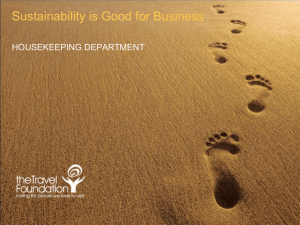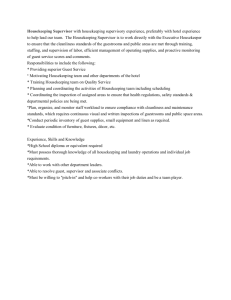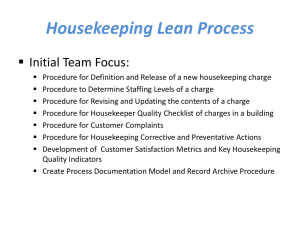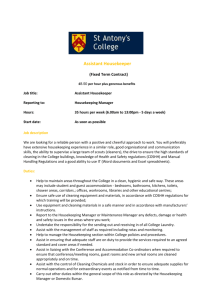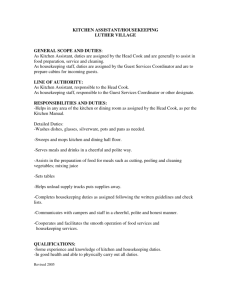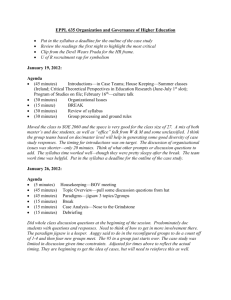Case Study 1
advertisement
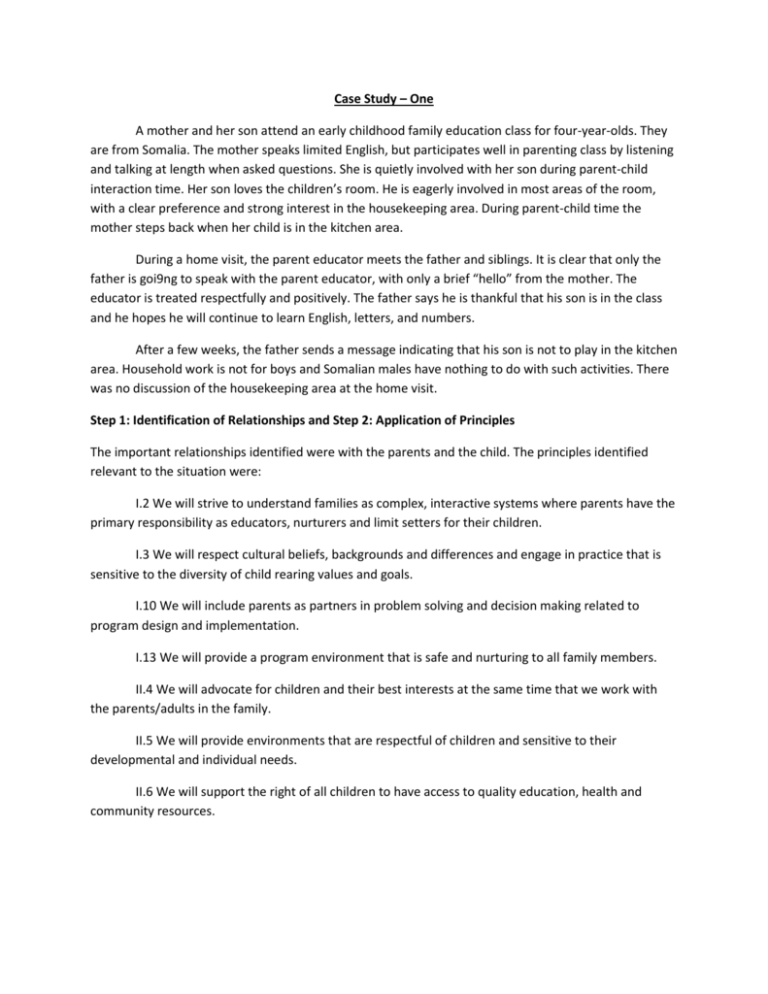
Case Study – One A mother and her son attend an early childhood family education class for four-year-olds. They are from Somalia. The mother speaks limited English, but participates well in parenting class by listening and talking at length when asked questions. She is quietly involved with her son during parent-child interaction time. Her son loves the children’s room. He is eagerly involved in most areas of the room, with a clear preference and strong interest in the housekeeping area. During parent-child time the mother steps back when her child is in the kitchen area. During a home visit, the parent educator meets the father and siblings. It is clear that only the father is goi9ng to speak with the parent educator, with only a brief “hello” from the mother. The educator is treated respectfully and positively. The father says he is thankful that his son is in the class and he hopes he will continue to learn English, letters, and numbers. After a few weeks, the father sends a message indicating that his son is not to play in the kitchen area. Household work is not for boys and Somalian males have nothing to do with such activities. There was no discussion of the housekeeping area at the home visit. Step 1: Identification of Relationships and Step 2: Application of Principles The important relationships identified were with the parents and the child. The principles identified relevant to the situation were: I.2 We will strive to understand families as complex, interactive systems where parents have the primary responsibility as educators, nurturers and limit setters for their children. I.3 We will respect cultural beliefs, backgrounds and differences and engage in practice that is sensitive to the diversity of child rearing values and goals. I.10 We will include parents as partners in problem solving and decision making related to program design and implementation. I.13 We will provide a program environment that is safe and nurturing to all family members. II.4 We will advocate for children and their best interests at the same time that we work with the parents/adults in the family. II.5 We will provide environments that are respectful of children and sensitive to their developmental and individual needs. II.6 We will support the right of all children to have access to quality education, health and community resources. Step 3: Identification of Contradictions Principle I.3, respect for cultural beliefs, was identified as most important. This principle was found to be in conflict with Principle II.5, which is providing environments sensitive to a child’s developmental and individual needs. Some important questions were: How Americanized does the family want to be? Are they here permanently or just for a year or two? Could we leave it to the mother to restrict the child? What about other families? Is the housekeeping area an important culture for them? What other dramatic play areas could there be? Step 4: Application of Virtues Both caring and prudence appear to be important in this particular case. Caring allows the parent educator to respect the individual family members in this situation and understand their different perspectives. Prudence provides the ability to understand competing needs in this case and to make decisions that reflect the needs of parents and young children. Step 5: Consideration of Possible Actions The strategies that could be applied in this case study include the following: Discuss with the family what children learn through the housekeeping area. Indicate that this is the are that consistently has the most social interaction. This may be particularly good for their son’s development of language. Make a strong statement that one of their program’s goals is to be respectful of family culture. Let the family know that staff would never insist that the child play in that area. Ask the parents if they had ideas on how to resolve the situation. Inform the parents that their son would be observed to see what aspect of the housekeeping area he seemed most interested in and then try to offer play settings that would address those interests. Inform the parents that times would be incorporated when the kitchen was not part of the classroom. The staff said that they could be comfortable with the kitchen area being absent onethird to one-half of the year. Thank the parents for bringing this to staff and giving them the opportunity to consider the issue. Explain that this was a growing experience for staff in addition to being important for their son and his specific teachers. Step 6: Selection of Action(s) The actions and steps determined best to take were to: 1. Talk to the parents about the issues and see if they had any ideas for resolving the situation. 2. Add new dramatic play props to transform the housekeeping are into a variety of different opportunities for the children. 3. Teach the parents about what children learn through dramatic play and why the housekeeping area is part of the environment.

